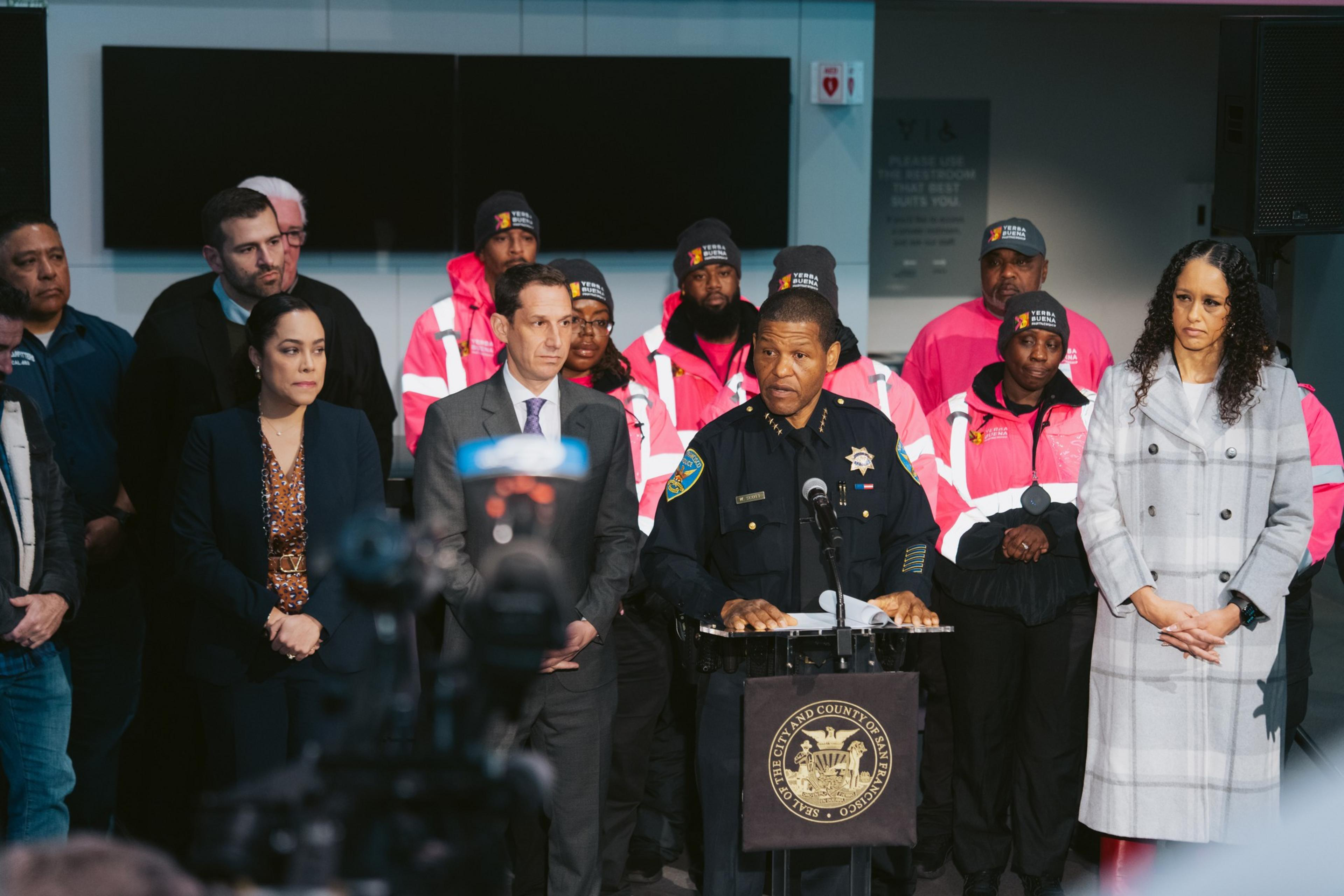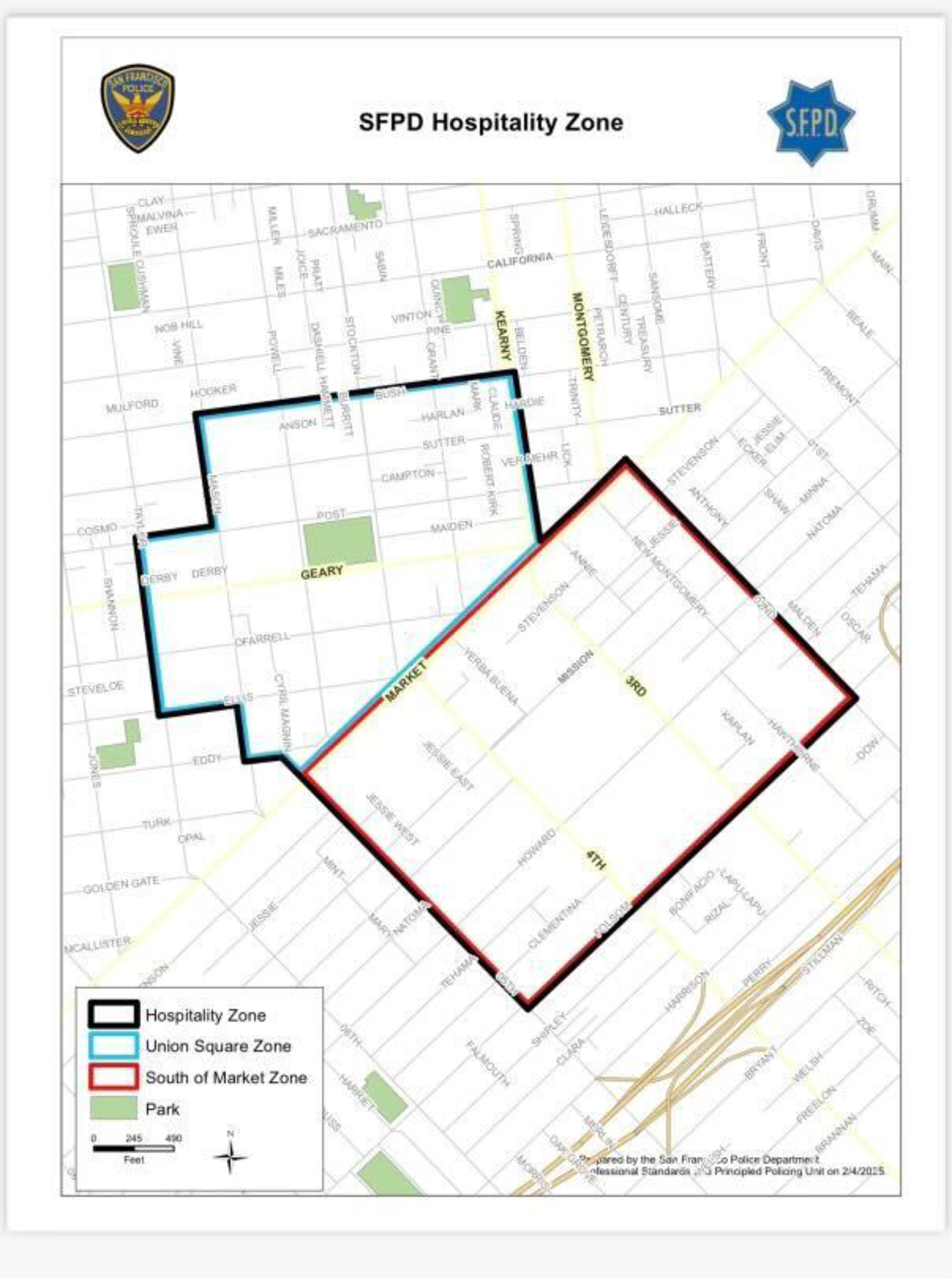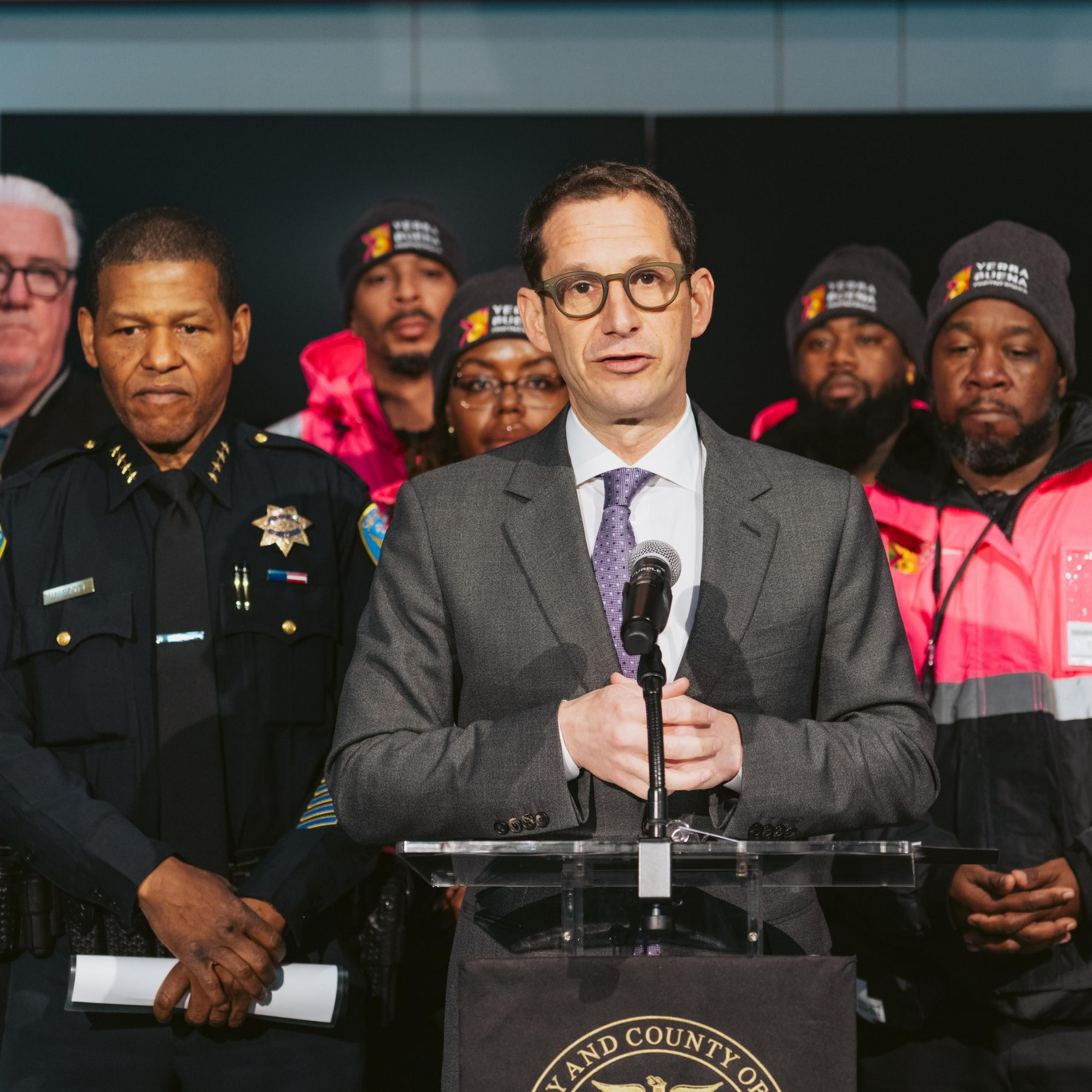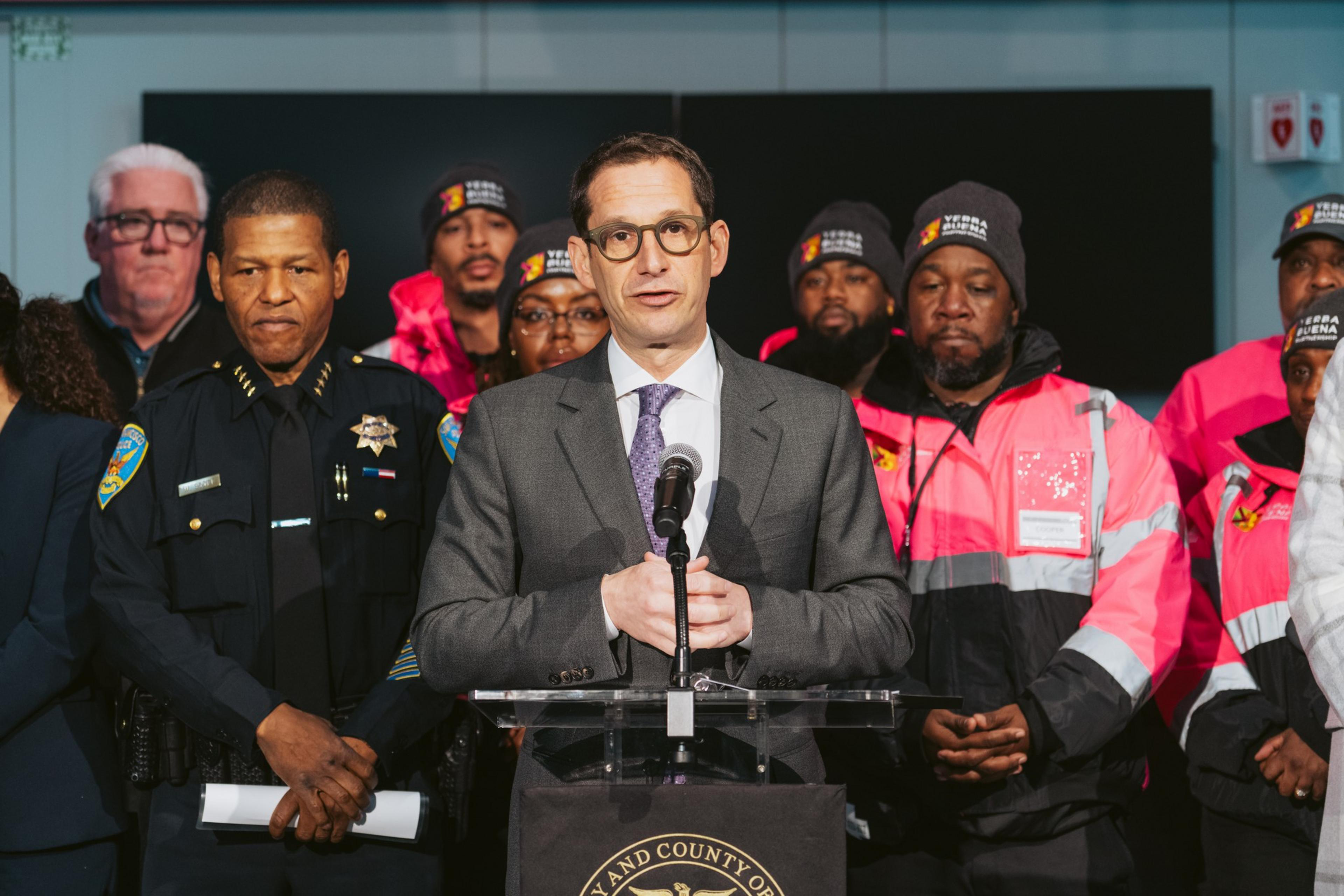Mayor Daniel Lurie on Thursday announced the creation of a task force aimed at boosting public safety and economic recovery in San Francisco’s downtown and tourist areas.
The “hospitality zone” task force will supplement San Francisco Police Department deployments by concentrating additional cops in key areas around Union Square and the Moscone Center in SoMa. Unlike regular patrol officers, the task force members will not handle radio calls, allowing them to focus on preventative policing and community engagement.
“The hospitality zone task force will provide residents and visitors with the security they deserve 365 days a year,” Lurie said at a press conference at the Yerba Buena Center for the Arts. “When downtown wins, we all win.”
This may feel like déjà vu to San Franciscans who remember safety campaigns by former Mayor London Breed. She repeatedly directed law enforcement to focus on tourist areas, particularly Union Square.
Breed’s efforts began in July 2021 with a plan to station 26 additional officers in two SFPD districts, followed by offering $100,000 rewards for information on organized retail crime. Then there was a “safe shopper” program and the deployment of 150 community ambassadors. Still, Union Square has seen suffering hotels and an exodus of retailers.
South of Market Street, the new hospitality zone extends to Folsom Street between Second and Fifth. North of Market Street, the zone’s edges are Kearny Street on the east, Bush Street on the north, and Mason and Taylor streets on the west.
SFPD Chief Bill Scott said the initiative will include both uniformed and plainclothes officers, with the ability to scale up staffing for major events. The department plans to maintain a command van in the hospitality zone, despite operating with about 25% fewer officers than needed overall.

“You will see noticeable differences with this task force, and you will see it very quickly,” Scott said, highlighting recent successes, including a 70% reduction in car break-ins compared to last year.

Committing more officers to a vital yet relatively small footprint of the city raises questions about where the understaffed police department will find the manpower for the team. A recent report revealed that the SFPD’s overtime spending surged 317% over five years, reaching $108.4 million in 2023.
Scott did not directly address this, saying task force members would collaborate with partner agencies like the Sheriff’s Department, the adult and juvenile court divisions, and federal law enforcement, in the same manner as the city’s Drug Market Agency Coordination Center.
“You may ask, ‘Well, how come you didn’t do this before?'” Scott said, explaining a need to prioritize resources in the face of the staffing shortfall. “Yes, it comes at a cost. We’d like to start this off bigger, but we started off with a model that we know we can scale when we need to.”
The SFPD is also creating what it calls a “triage center” in a Stevenson Street parking lot, where officers will refer drug users to treatment programs or to a bus that takes them to jail. This initiative, announced Tuesday, aims to reduce the amount of time officers spend processing paperwork for drug cases so they can focus on policing the area around Sixth Street in SoMa, where dealing and drug use are brazen. The triage center will be inside the new hospitality zone.
The anti-crime initiatives come as San Francisco prepares to host the NBA All-Star Weekend and Lunar New Year parade next week. Officials pointed to the recent JP Morgan Healthcare conference as evidence that the city can host marquee events. Lurie noted that the conference has committed to returning to the city.
District Attorney Brooke Jenkins emphasized the importance of a visible police presence beyond crime statistics. “It’s not enough for us to see the data that crime is dropping — people have to feel safe,” she said.
Union Square Alliance CEO Marisa Rodriguez welcomed the initiative, saying foot traffic and business activity have shown improvement since November. The alliance’s 2022 strategic plan identified safety and cleanliness as top priorities for the district’s recovery.
The task force will coordinate with other agencies, including the Department of Emergency Management, and will build on existing efforts like the fentanyl state of emergency ordinance. Officials said tourism and hospitality generate 75% of San Francisco’s economic impact.

